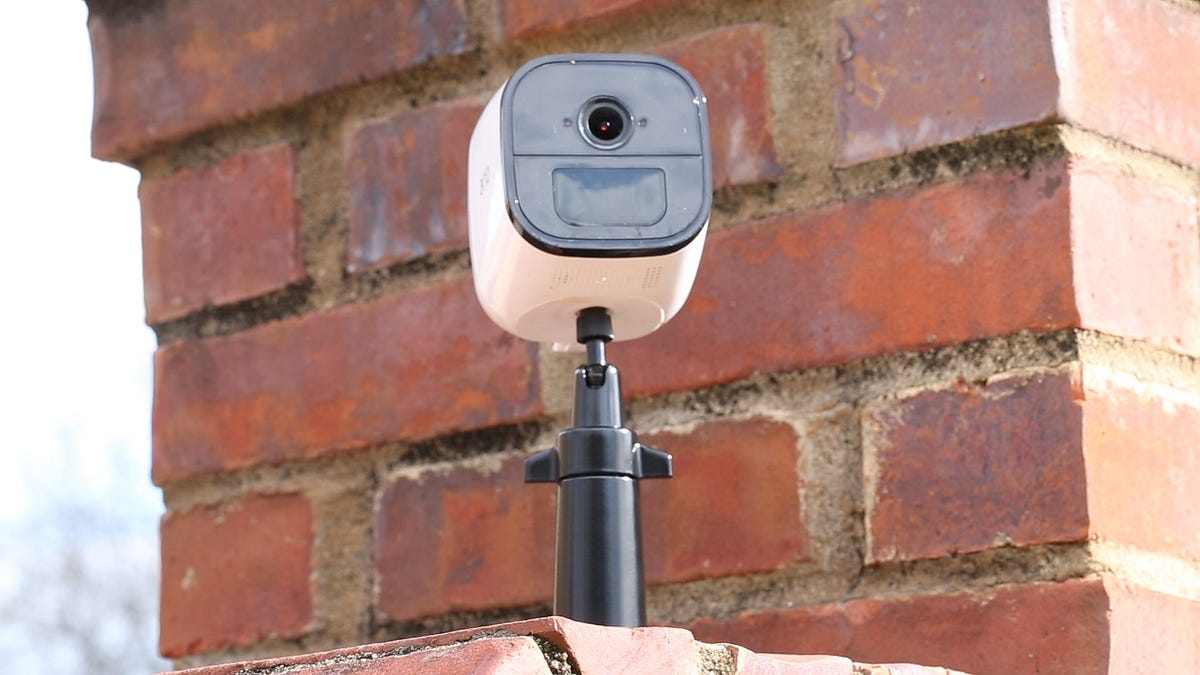How to set up an outdoor camera to keep an eye on garden pests
Don't want the local wildlife eating your garden? Keep watch with an outdoor camera.

Security cameras aren't *just* for theft deterrence. You can use 'em to spy on your pets while you're at work -- or even to watch out for rabbits, deer and other potential garden pests.
Now that it's officially spring, we have all sorts of smart outdoor stuff in the works. One of those things is a garden with a smart irrigation system my co-workers Andrew Gebhart and Steve Conaway made themselves. They'll be growing lettuce, jalapeños, Carolina Reapers, tomatoes and bell peppers over the coming months.
But the CNET Smart Home is in a rural part of Kentucky and wildlife is a common occurrence. Here's how we set up an outdoor security camera, specifically the LTE-enabled Netgear Arlo Go -- to watch over our garden (and you can too -- it's super-easy).
Even though it's in the 30s in KY, we're already working on so much awesome @CNETSmartHome stuff for spring. Yes, @GebAndrew will be growing (and later eating) Carolina Reapers -- the hottest chili in the WORLD -- in our smart garden. Read my overview to see what else is coming: https://t.co/gc1pDExeS8
— Megan Wollerton (@meganwollerton) March 20, 2018
First things first
Netgear's Arlo Go is an HD outdoor LTE camera, meaning it doesn't connect to Wi-Fi -- only a cellular network. The model I have works with AT&T through an included SIM card. Netgear also sells Verizon and Arlo Mobile versions (Arlo Mobile is Netgear's own cell network). The Go is designed to run on a rechargeable battery, but you can also connect it to the included adapter for a continuous connection.
You unfortunately do have to pay for one of Netgear's plans for the LTE connection to work. (Learn more about your subscription options.)The paid subscription thing isn't ideal, but you'll find it works the same with other LTE cams. I chose this camera because it's battery-powered and works when Wi-Fi won't -- something that will come in handy where our garden is located.
Download the app
Before you do anything else, install Netgear's Arlo app on your phone; the app works on Android and iOS devices. The app is straightforward and it's easy to follow along with the tutorial to get your camera connected correctly.
Configure your cam
Press the "sync" button on the camera, scan the QR code in the app, name your camera something that will differentiate it from your other security cams or smart devices -- we went with "garden." Next, select a mobile plan. Again, you can find more about the service options here.
If the Arlo go does disconnect from its cellular network and your camera experiences outages, it records locally to a microSD card (you have to buy the microSD card separately, though; it supports up to 32GB cards).
Find the right spot
Place your camera in an optimal spot where you can bring up the video feed and see your complete garden (or whatever space you're trying to keep an eye on). I set our Arlo Go on a brick retaining wall that's within close range of ours. It's a fairly heavy camera, especially when you attach the included (optional) stand, but it might not stay put when it's super-windy out. The Arlo Go does come with hardware so you can mount it to a wall for a more permanent solution.
You'll get push alerts sent to your phone and emails (if you want) whenever your Go's motion detector picks up on activity. You can also access previous clips saved automatically to the cloud in the Arlo app for up to seven days for free.
And you're done
It's really that simple. Configure your camera like you normally would, ensure it's in an optimal spot to see your entire garden, and receive alerts when there's any activity in the area. And if something's there munching on your garden vegetables, press the alarm button in the app to sound the Arlo Go siren. You're sure to scare away whatever's in the area.
The Smartest Stuff: Innovators are thinking up new ways to make you -- and the world around you -- smarter.
Smart home compatibility tool: Find out what smart home platforms work with your existing kit and vice versa.

